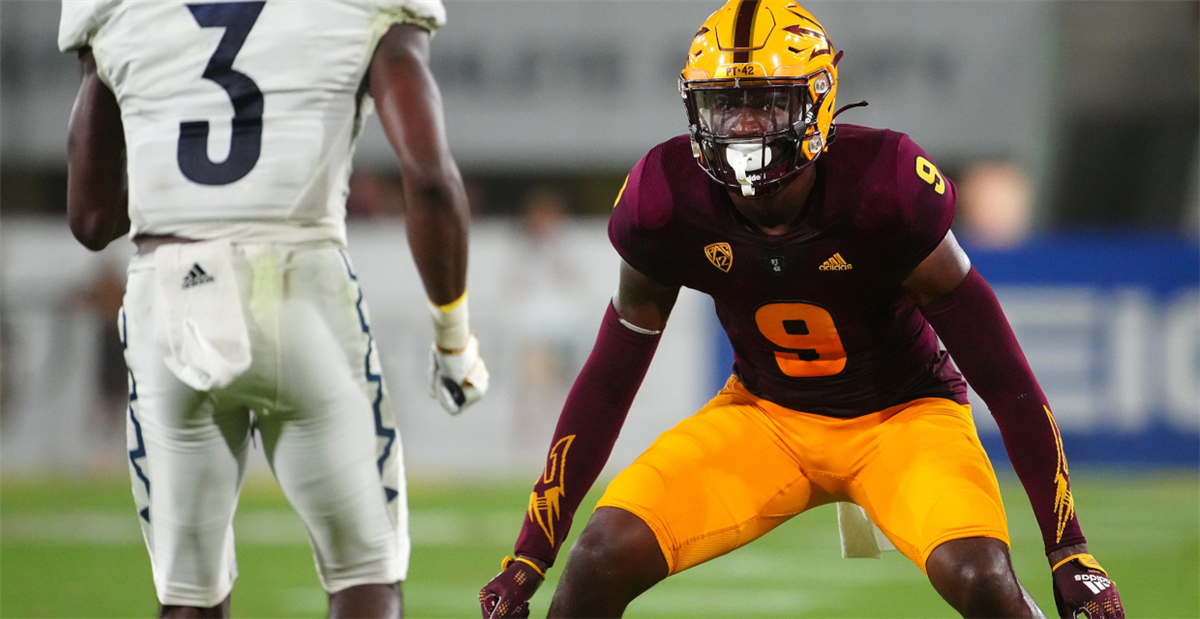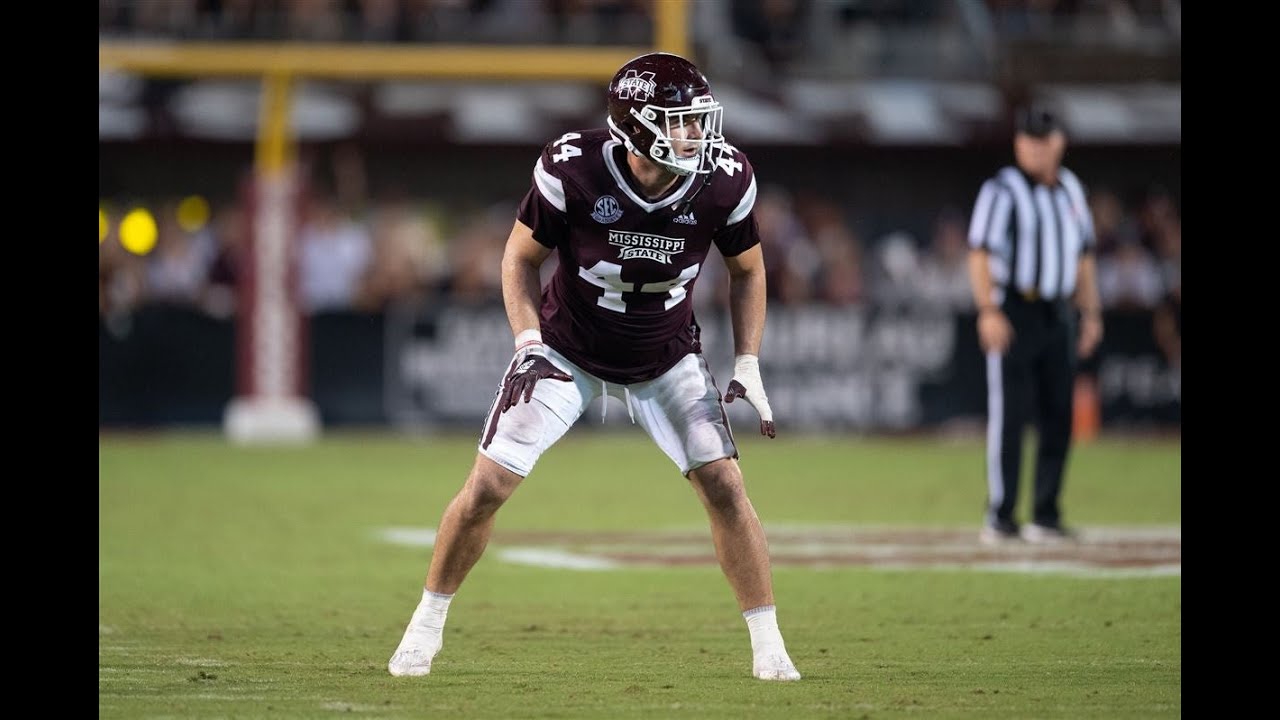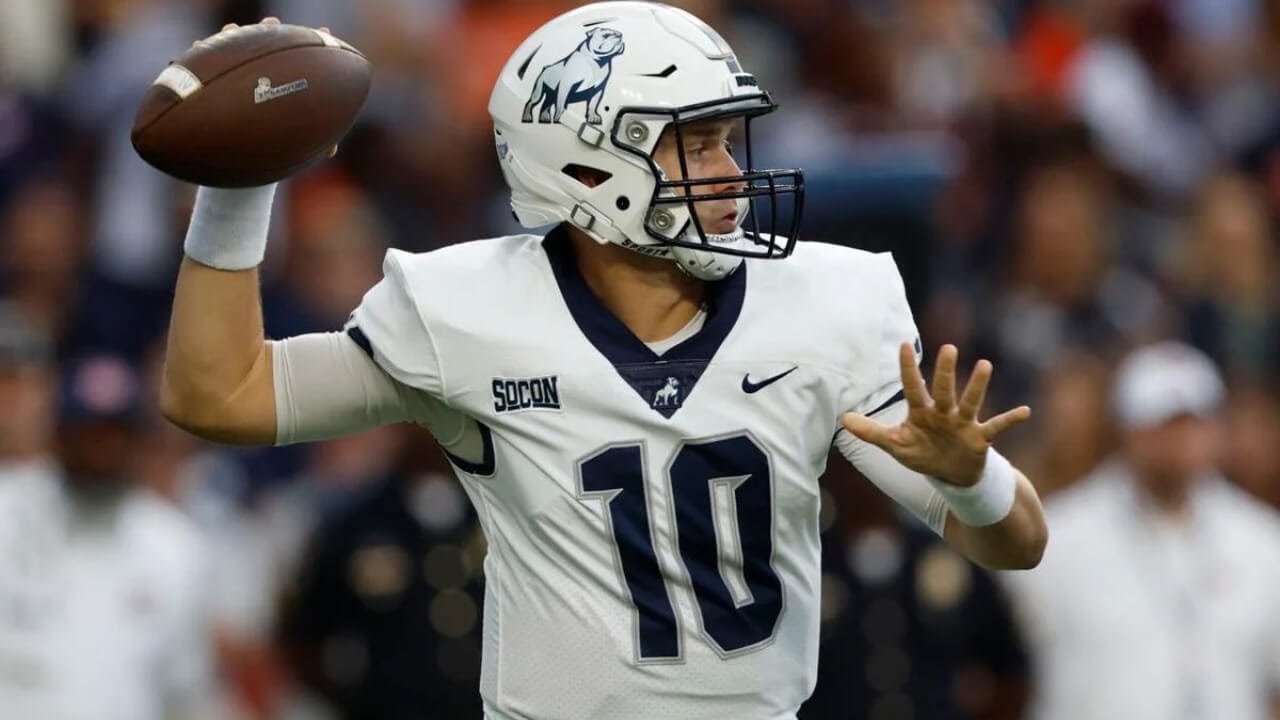Just like the NFL Draft, the UFL’s College Draft is a time for teams to fill needs with young players entering their first pro football seasons. Unlike the NFL Draft, though, the College Draft is unlikely to unearth impact players for the upcoming season: A breakdown of the 2024 XFL Rookie Draft found that just eight of the 80 drafted players participated in UFL game action in 2024.
It’s a little different this year, as half the teams won’t be eliminated between the draft and the next season (hopefully!). That could make it more likely those drafted are able to find their way onto 51-man rosters. Whichever way you look at it, this is the first step in teams populating their rosters for 2025, and that itself carries a fair amount of intrigue.
This represents my second year presenting a first-round mock draft for the Rookie Draft. Last year, none of the players in my mock draft were selected; however, two were signed as undrafted free agents, including one by the team I predicted would draft him. That counts for something. Right?
Anyway, here’s my stab at the first round of the UFL College Draft.

1. Memphis Showboats – CB Ro Torrence, Arizona State
The Player: Originally signed as an undrafted free agent by the Seattle Seahawks, length is the name of Torrence’s game: He stands nearly 6’3″ with a long wingspan to match, in the mold of Seahawks corners from the Legion of Boom era. Torrence started his collegiate career in the JUCO ranks, then transferred to Auburn before finally landing with the Sun Devils. A two-year starter in the desert, he led Arizona State in passes defended in 2022. So why is he available to UFL teams? Poor testing numbers: He ran a 4.69 40-yard dash (the average of the first 10 corners drafted in April was a 4.45), which will take him off the draft boards of some teams. His vertical jump, bench press and broad jump numbers would’ve put him second-to-last of cornerbacks in those categories had he been invited to the NFL Combine.
The Fit: Memphis has a lot of needs, so they could go a number of directions with the first overall pick. Most pressing, though, are the offensive line and defensive backfield. OL could be the pick, but if not, Torrence makes a lot of sense. While not explosive, his size would be a help to a unit that gave up the most passing touchdowns, the highest completion percentage, and the most yards per completion to opposing quarterbacks in 2024. Bringing someone in who can be physical at the line of scrimmage and jam receivers before they can get into their routes would at least provide some disruption on the outside. The Showboats should really consider going best player available; if they do that, Torrence has to be in that conversation.
2. Houston Roughnecks – G Prince Pines, Tulane
The Player: If you want someone to maul the opposition in a phone booth, Pines is your guy. A four-year full-time starter, first at Sam Houston State, then at Tulane (and even before all that, he started four games at Baylor), Pines started 48 out of 58 games played across five years, predominantly at left guard. In 2022, he was a First Team All-AAC selection for the Green Wave. His 2023 season workload was reduced due to injury, though he still started eight games. A hamstring ailment hampered his pre-draft workouts, including at the NFL Combine. His size (6’4″, 322 pounds) and long wingspan give him an advantage on the interior, where he can bully opposing defenders. He’s not going to be a guy you pull and trap with, but if you want an advantage in the downhill run game, Pines can do that. He had tryouts with the New York Giants and Baltimore Ravens at rookie minicamp in May.
The Fit: Second overall would be an unheard of spot to select a guard in the NFL Draft, but this is the UFL Draft, which is a tad different. Despite having one of the best backs in the UFL in Mark Thompson, Houston failed to effectively run the ball in 2024; as a team, they averaged a league-low 3.7 yards per carry. The Roughnecks finished seventh in rushing yardage per game. Per Pro Football Focus, they were the worst run-blocking team in the league and much of that starts on the offensive interior. While center Jack Kramer was largely fine, both left and right guard spots are positions that would be wise for the team to upgrade in the offseason. Houston would prefer to be a run-first team, but they couldn’t pull it off last season. Pines has the measurables the Roughnecks seem to look for in their O-Line; in fact, he is the same height and is just one pound off of the listed size of starting guard Avery Gennesy.

3. Arlington Renegades – LB Jett Johnson, Mississippi State
The Player: A two-year starter with the Bulldogs, Johnson led the SEC in tackles in 2022 and finished second in 2023. During those two years, Johnson was overshadowed somewhat by fellow linebacker Nathaniel Watson, who was selected in the sixth round of the NFL Draft by the Cleveland Browns this past April. Watson was the more athletic of the two, playing inside in the team’s 3-3-5 defense. That left Johnson on the outside, but he’s scheme-versatile having played for four head coaches and three defensive coordinators during his six years in Starkville. There’s no 40-yard dash time on Johnson, which could lead to some questions about his athleticism. Those questions, plus his low pass-rush output (just eight career sacks) could ticket him for a move inside. But the results speak for themselves: In a competitive, high-level conference, Johnson also had 29 tackles for loss in his career (14 this past season), as well as four interceptions and four fumble recoveries.
The Fit: Arlington’s outside linebackers are all in their late-20s or early-30s; it’s necessary to begin rebuilding that level of the defense with youth that can contribute right away. Unlike some, Johnson won’t have a steep learning curve because of his experience in multiple defenses and against SEC offenses. His college production in pass coverage will be welcome for a team that gave up way too many easy throws over the middle. As Johnson eases into a role on defense, his most important contributions could come on special teams units, which would be acceptable for a first-year player at this level.
4. DC Defenders – DT Jalen Sami, Michigan State
The Player: Players with this kind of size don’t grow on trees. The 6’4″, 333 pound Sami (though he’s listed on MSU’s website at 6’7″) played his final college season at Michigan State, transferring in from Colorado following Deion Sanders’ takeover of the program. While he was a backup with the Spartans, Sami started 32 of 40 games played with the Buffaloes. As you’d expect, he didn’t produce much pass rush juice, notching just two sacks in 50 career games. Instead, his job was to eat up space and blockers so linebackers could flow freely to the ball. Unlike many players his size, Sami has seen snaps on special teams and could be a candidate for the field goal block unit. His accolades include an honorable mention All-Pac-12 selection in 2021. Sami parlayed his play into a minicamp tryout with the Miami Dolphins.
The Fit: Defenders DT TJ Barnes announced his retirement for the second offseason in a row. He first retired after winning an XFL Championship with the Renegades in 2023, then reneged on that and returned for 2024 with DC. Barnes, 6’7″ and 345 pounds, leaves a gaping hole in the middle of the defense with his departure. Fellow DT Niles Scott, who stands ONLY 6’1″ and 326 pounds, will be 29 years old next season. And backup DT Dennis Johnson doesn’t fit the size profile of those two (he’s 6’2″, 292 pounds). Barnes led DC defensive tackles in snaps, and Scott was second. Ideally, they’d be able to find somebody to replace Barnes’ production while also lessening Scott’s snaps to make him more effective. There are not many in this defensive tackle class with the size of Sami. Scheme-wise, he played in MSU’s four-man front, and that’s predominantly what DC plays.

5. St. Louis Battlehawks – QB Michael Hiers, Samford
The Player: Hiers could be this year’s Lindsey Scott, Jr., an FCS-level standout that is coveted in the College Draft. Hiers began his career at Murray State before moving to Northwest Mississippi Junior College, then finally landing at Samford for his last two seasons. While starting both years there, Hiers compiled a 74.0% completion percentage for over 6,000 passing yards, 54 touchdowns and just 12 interceptions. He was the conference player of the year in 2022 and set the school record for touchdown passes in a season (36) while leading the nation in completion percentage. Hiers won’t “wow” with athleticism (4.89 40-yard dash), is a little undersized (6’1″, 205 pounds) and has some turnover issues that need to be ironed out. But the ability to be precise in his passing is hard to overlook. It’s a big jump from the FCS level even to the UFL for a QB, so he would likely need a “redshirt” year wherever he ends up.
The Fit: The Battlehawks don’t have obvious holes on the roster that would need to be addressed in the first round. The one place they may decide to seek improvement is behind AJ McCarron at quarterback. It’s no guarantee McCarron returns in 2025, and his 2024 backups, Manny Wilkins and Brandon Silvers, seem unlikely to be contenders for the starting job. Should McCarron come back, Hiers could be groomed to take over when AJ does hand over the reins. If the QB job will be open next year, Hiers could at least come in and compete for the spot with some combination of Wilkins/Silvers or a veteran that is brought in from the outside. Even in a 10-game season, only two UFL quarterbacks started every game. Competent number twos (and even number threes) are required, and at worst, Hiers could provide that from the outset. Offensive coordinator Bruce Gradkowski prefers QBs who can get the ball out quickly with high-percentage throws, and that’s a skill Hiers mastered in college.
6. Michigan Panthers – OT Nolan Potter, Northern Illinois
The Player: A fixture at right tackle for the last four seasons in DeKalb, Potter was a two-time team captain and started 43 of the last 45 games for the Huskies. In his final season of eligibility, Potter was part of a line that gave up just 1.2 sacks per game, and paved the way for a run game that finished 36th in the country at 179.6 yards per game. The league’s coaches voted Potter a First-Team All-MAC selection in both 2022 and 2023. He also earned first team All-MAC honors from Pro Football Focus this past season. His skills off the field are worth mentioning as well, as Potter made the Academic All-MAC team three times. That intelligence often comes in handy on the football field. The lack of positional versatility may hinder Potter’s development, though his size wouldn’t preclude him from moving inside. After the NFL Draft, he was signed by the Atlanta Falcons, but later released.
The Fit: This would be the second year in a row that Michigan drafted an offensive tackle in the first round; Last year, it was Jarrett Horst, who spent most of this season on the left side of the line. The tackles were a sore spot for Michigan, as they combined to surrender 14 of the 17 sacks on the season. Four players that saw snaps there (Horst, Josh Dunlop, Ryan Pope, and Chim Okorafor) were the four lowest-graded pass blockers on the team, per PFF. Michigan needs to address this position in the offseason; whether they should do it with a rookie again or with a veteran in free agency is up for debate. The fact that they need multiple new players at this spot suggests they should at least add someone in the Rookie Draft. Potter fits the prototype in terms of size that Michigan looks for in its offensive tackles at 6’5″, 310 pounds. Starting him on the right side would be the smart play, giving him an opportunity in a competitive environment to win that job.
7. San Antonio Brahmas – ED Richard Jibunor, Troy
The Player: Following in the footsteps of other accomplished edge rushers out of Troy University, such as Osi Umenyiora and DeMarcus Ware, Jibunor saved his best for last. In 2023, he finished top 10 in the country in both sacks (10) and tackles for loss (18). That performance earned him a spot in the East-West Shrine Game, one of the premier post-season all-star games for draft-eligible players. In 54 career games, he started 38, finishing with 32 sacks, 49 tackles for loss, 10 forced fumbles, and three interceptions. Jibunor began his career at Auburn in 2018, where he managed two sacks and three tackles for loss in just four games. He left after one year, then sat out 2019 as a transfer before stepping in as a part-time starter with the Trojans in 2020. In The Athletic, draft analyst Dane Brugler wrote that Jibunor has “a tweener skill set…but his linear explosion and long arms are intriguing foundational traits.” Jibunor tried out for the New Orleans Saints and Seattle Seahawks after the NFL Draft.
The Fit: This is certainly not a position of need for the Brahmas, at least not yet; there is a possibility that the NFL could come calling on some of the team’s best at that spot over the next few months, so selecting Jibunor could help them prepare for that. Besides, you can never have enough edge rushers – teams are always looking for ways to affect the quarterback, and if you can rotate horses in and out to do just that, then you have an advantage. Jibunor is a little smaller than players San Antonio has stockpiled at this position (6’2″ and just 232 pounds). However, his production, even at the Sun Belt Conference level, and his traits could be too much for a defensive coach like Wade Phillips to pass up. Consider this drafting from a position of strength.
8. Birmingham Stallions – CB Johnny Dixon, Penn State
The Player: Graded as a late-round NFL draft prospect, Dixon went un-selected and has yet to work out for any NFL teams due to a hip injury suffered at the Senior Bowl in February. In fact, in a since-deleted post on Twitter/X, Dixon noted “teams fear I may not play again.” And it’s not just the hip; he has a pretty extensive medical history in college. As for Dixon’s on-field play, he managed to pick off four passes and was credited with 24 passes defensed in five seasons, two at South Carolina, the final three in Happy Valley. He also showed the ability to be a factor in the run game with 11.5 tackles for loss, and in blitz packages, with 7.5 sacks. The word “feisty” has been used in multiple scouting reports to describe Dixon’s play style, though his tackling and penchant for penalties are ares to clean up. Speed was a question before the injury; it’s an even bigger one now.
The Fit: Birmingham can afford the kind of boom or bust pick Dixon would be at this spot. If he manages to get healthy, an NFL team could be interested before he steps foot in Protective Stadium. There’s also the chance he never plays a down of football again. However, players like Dixon can get lost in the shuffle of an NFL training camp if he does return from injury. An NFL may prefer to see him perform at a high level before they bring him in, something that the Stallions can offer. Birmingham has a few corners under 6’0″ (Dixon is 5’10”) so his lack of size wouldn’t necessarily take him off their draft board. It’s a luxury pick, and Birmingham is one of the few teams in the league that can afford that kind of luxury.











